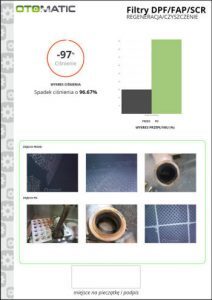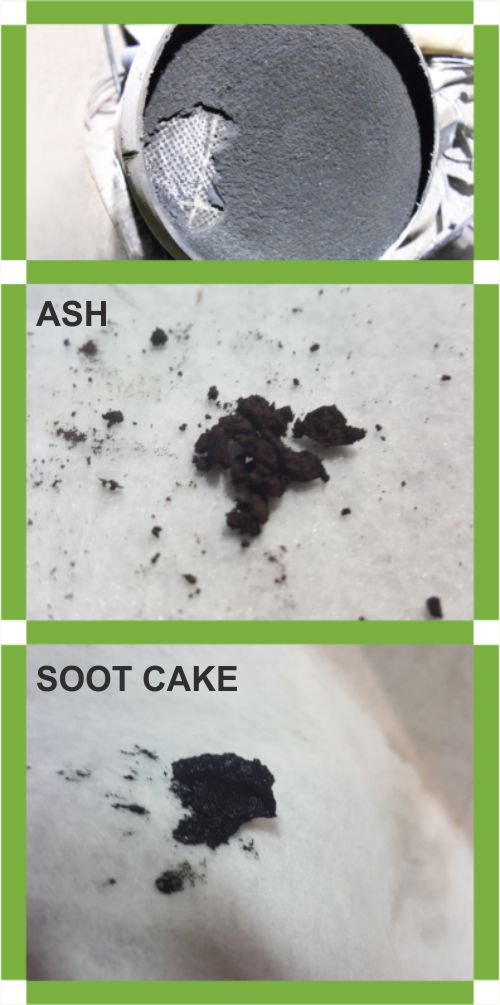
Soot - a product created during incomplete combustion of fuels.
Generally, we can distinguish two types of soot accumulation:
1. Pore accumulation -solid particles are deposited in the pore network inside the material of the filter wall.
Although only a small portion of soot accumulates in the micropores of the filter, it contributes to a sharp increase in the pressure drop in the filter.
Depending on the level of soot load and filter type, pore accumulation may in some cases constitute a 50% drop in the filter pressure, or even more.
2. Soot cake - as the soot charge increases in the pore network, the layer of particles begins to form along the wall surface in the inlet channels, and soot cake becomes the dominant filtration mechanism.
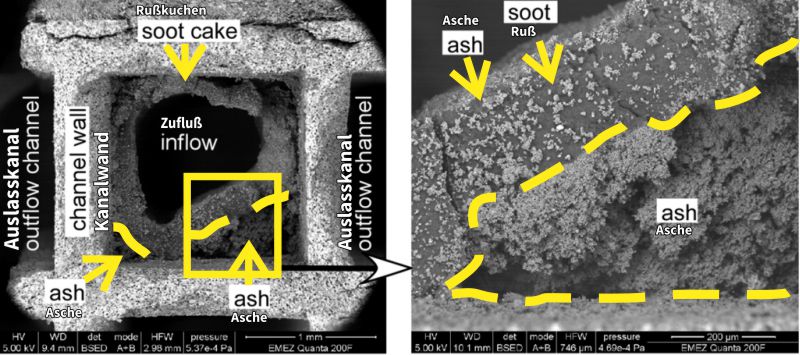
Ashes
Ash accumulates in DPF during prolonged use, as a non-flammable material left after filter regeneration and soot oxidation. Ash consists of various metal compounds derived from lubricating additives, trace elements in fuel and wear of the engine and corrosion products.
As shown in Fig. 1, the ash may occupy a large part of the filter volume, because it may accumulate in the thin layer along the channel walls or occupy space towards the back of the filter channels. One of the effects of ash accumulation is to reduce the effective volume of the filter, or the area of filtration, and reduce the soot storage capacity. Ash deposition also changes the distribution of soot, usually moving it towards the front of the filter. These combined phenomena contribute to reducing the diameter of the channel and reducing the effective length of the filter channels. As a result, the ash contributes to increasing the backpressure of the exhaust flow.
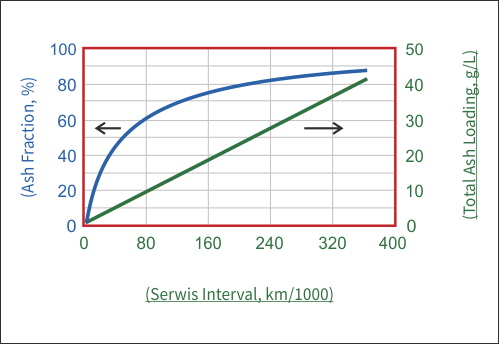 Secondly, the ash layer physically separates the soot accumulated from the catalytic metals (e.g., platinum particles) that can be deposited on the surface of the DPF walls. This not only prevents the contact of soot particles with the catalytic metals, but additionally increases the required diffusion length for the oxidation of soot supported by NO2 (nitrogen dioxide).
Secondly, the ash layer physically separates the soot accumulated from the catalytic metals (e.g., platinum particles) that can be deposited on the surface of the DPF walls. This not only prevents the contact of soot particles with the catalytic metals, but additionally increases the required diffusion length for the oxidation of soot supported by NO2 (nitrogen dioxide).
Figure 1 best illustrates the size of the problem because it represents the proportion of ash in the total mass of material accumulated in the DPF (ash and soot), assuming a maximum load of 6 g / L
On the basis of Figure 2, after only 53,000 km on the road, about 50% of the material accumulated in the DPF is ash. In other words, the amount of ash is equal to the amount of soot at the maximum permissible soot load limit of 6 g / L. Furthermore, after 240,000 km, ash is more than 80% of the material trapped in the DPF, including the minority of soot.
Motor oil contamination resulting from a leaky engine intake system (eg turbocharger failure). Oil gets into the filter cartridge (monolith) where it burns out.
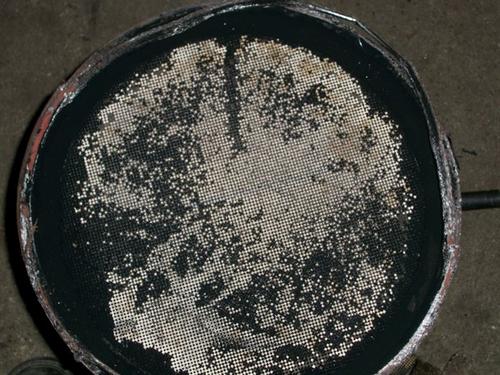 |
 |
| pic. 2 - Burnt oil | pic. 3 - Adblue system failure |

